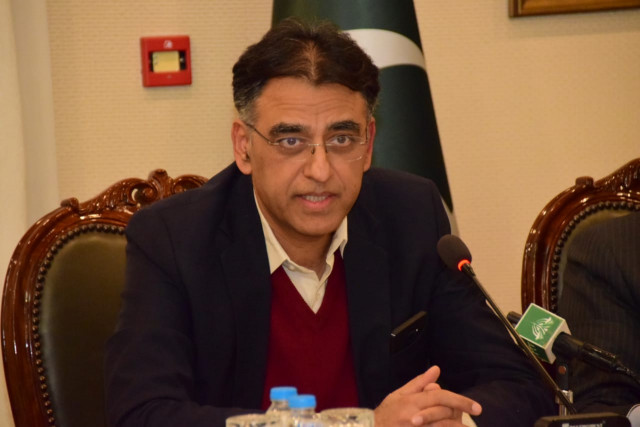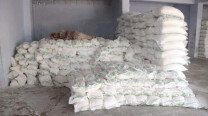Umar cites economic recovery as measure of growth
Minister credits PM’s Covid strategy for better to good performance

Federal Minister for Planning, Development and Special Initiatives Asad Umar, while pointing out that all indicators pointed towards improvement in the economy, on Tuesday said it was irrelevant whether the growth rate was less or higher than 3.94%.
In his first interaction with the media after the controversy over the outgoing fiscal year’s growth rate, which erupted five days ago, the minister said that “all high-frequency data are pointing [towards] improvement in the economy whether the rate is 3.94%, less or even higher than that”.
Umar is the first cabinet minister who did not give too much emphasis on the growth rate, rather he highlighted the fundamental point that the economy did progress in the outgoing fiscal year, irrespective of the growth rate.
He was addressing a news conference along with Information Minister Fawad Chaudhry after attending the federal cabinet meeting.
Last week, the National Accounts Committee had approved a provisional growth rate of 3.94% for fiscal 2020-21 after the State Bank of Pakistan and the Ministry of Finance withdrew their objections over agriculture production numbers and the high economic growth despite a constant decline in the investment-to-GDP ratios.
Umar said it was common that professionals raise such questions. When asked whether the nearly 4% economic growth rate could be achieved when the investment-to-GDP ratio was constantly on the decline for three years in a row, the minister said there was little relation of the investment with the economic growth.
“The investment ratios are meaningful only in the longer term and the growth can be achieved without investment by utilising the idle production capacity,” Umar said.
According to the minister, some people doubted the growth rate because it was different from the projections made by the World Bank and the International Monetary Fund (IMF).
He said that last year the National Accounts Committee approved 0.38% economic contraction and revised it to negative 0.47%. The World Bank had said that Pakistan’s economy would shrink by 1.5 to 2%, which had not happened and the National Accounts Committee was proved right, he added.
Responding to another question as to why the government did not take any action against the World Bank like invoking no-objection certificate for not accepting its officially-approved figures, the minister said that the government would not give any threat to the World Bank.
Umar credited Prime Minister Imran Khan’s strategy to deal with the coronavirus pandemic for the country’s better economic performance despite earlier low projections.
The prime minister personally made efforts for the construction sector. Umar said that daily-wage labourers earned the most from the construction sector, adding that Pakistan did not have trillions of dollars compared to bigger economies so it wanted people to invest in sectors such as construction that generated the most employment.
He also acknowledged the positive contribution of former finance minister Dr Abdul Hafeez Shaikh towards economic stabilisation.
The minister said that the overseas Pakistanis sent an additional $5.4 billion in remittances in the first 10 months of the year which would rise to around $6.5 billion by the yearend. The additional injection of about Rs1 trillion has also fuelled the economy, he added.
More than half of Pakistan’s population is directly or indirectly linked to the agriculture. The crops of wheat, maize and rice, had record production this year, which injected over Rs1,100 billion in the rural economy, claimed the minister, adding that out of five big crops, only cotton production was not as good as last year.
There was also bumper sugarcane crop this year and the second-largest yield in Pakistan’s history, Umar said. All the data regarding crops had been available for months but there was no controversy about them, he added.
He said the government had been receiving statistics for months and no one had raised any questions previously. The minister said that it was logical that if there was growth in the production sector, then the services sector will also show growth.
He said that loans taken by the private sector were a good indicator of industrial activity and figures were reported every month by the SBP. Data for the first nine months of the year showed a 60% increase in the number of loans taken by the private sector in general, while there was an increase of Rs126 billion in loans taken by the sector for expansion purposes, he added.
Umar said the Ehsaas Emergency Cash Programme money was given to nearly one-third of Pakistani families, which was then put back into the economy when the people spent it that helped the economy to grow.



















COMMENTS
Comments are moderated and generally will be posted if they are on-topic and not abusive.
For more information, please see our Comments FAQ